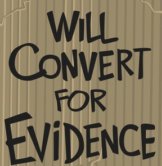
|
A thermonuclear bomb needs two very specific isotopes of hydrogen:
deuterium Hydrogen-2 (hydrogen with one neutron in its nucleus) and
These two isotopes fuse together at much lower energies than any other,
allowing the bomb to function. But there is an issue. While deuterium is a
naturally occurring and stable isotope which we can easily extract from water,
tritium is highly radioactive, with a half-life of only 12.5 years, and
as such, needs to be artificially made.
We make tritium by irradiating lithium in nuclear reactors and
then painstakingly extracting the gas that is emitted. It may sound
simple, but the complexity and cost of this process are astronomical,
which is why tritium is one of the most expensive materials ever
made at $30,000 per gram!
A large commercial nuclear power reactor produces about 20,000 Ci (~2 g) of
tritium per year. This tritium is generally incorporated in the nuclear fuel and cladding.
A boosted fission weapon
usually refers to a type of nuclear bomb that
uses a small amount of fusion fuel to increase the rate, and thus yield, of a
fission reaction. The neutrons released by the fusion reactions add to the
neutrons released due to fission, allowing for more neutron-induced fission
reactions to take place. The rate of fission is thereby greatly increased such
that much more of the fissile material is able to undergo fission before the
core explosively disassembles. The fusion process itself adds only a small
amount of energy to the process, perhaps 1%.
|
Send comments to:
 hjw2001@gmail.com
hjw2001@gmail.com
|















